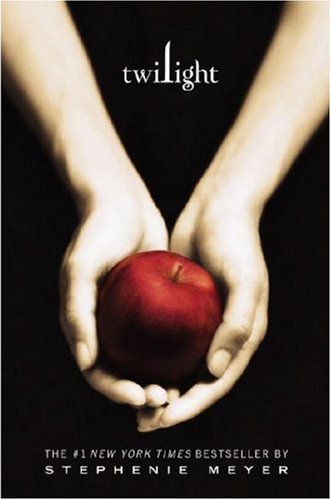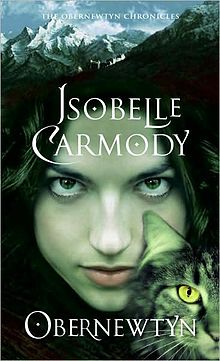As a publicist, editor and occasional slush-pile reader, Jenna O’Connell doesn’t just know books, but the ins and outs of getting them on bookstore shelves and into readers’ hands.
BELINDA: Hot topic first. Do you think love is killing the teenage heroine and why?
JENNA: Killing is such a strong word! We’re certainly not seeing an absence of teenage heroines because of the current focus on love/romance. But is it killing originality in the YA genre? I think there’s an argument to support that.
Undoubtedly, Twilight had a huge impact on the way booksellers and readers look at Young Adult fiction. (I choose Twilight over Harry Potter not because J.K Rowling’s phenomenon was any less, but because it tends to span the boundary of children’s and young adult fiction). As Ashley Strickland noted in her “A Brief History of Young Adult Literature” piece, the early 2000s was the first time booksellers began marketing directly to teens. Twilight was one of the first to really explode, and the first novel is allegedly based on Austen’s Pride and Prejudice. Both are steeped in elements of romance.
So when you’ve got something that sells so ridiculously well–as of 2012 Twilight had sold over 120 million copies–it’s inevitable that other authors are going to try and emulate that success. The problem was that this dominance of YA in the 2000s was really defined by Twilight. So publishers were optioning a lot of the same, and that really shaped the genre. The buying public wanted romance, so that was what they were going to get.
I’d say we peaked maybe a year or two ago with receiving submissions for Young Adult novels where the protagonist (usually female) was misunderstood, lonely and–I hate this term–different to other girls. There are always two other characters, usually of the opposite sex, vying for her attention. The relationships depicted in many of these are not ones young readers should desire, but that’s a whole other can of worms.
If you look at the most popular YA novels more recently–The Hunger Games, Divergent, anything by John Green–the defining feature is their focus on romance. After a while it becomes formulaic. The only real focus of a teenage heroine these days seems to be love. Sure, they can save the world, do some amazing things, but the story isn’t over until they find love.
Is this predictability killing off the teenage heroine? I’d have to say no. The teenage heroine is still there and, considering YA are a huge market now, she’s always going to be there. However, I think there’s a danger to her becoming too one-dimensional, which is almost as bad as having her not exist.
BELINDA: How do you think love and romance should be portrayed in YA fiction?
JENNA: With some realism please! I know that’s asking a lot right now, as so many YA’s are also dystopian fiction, where anything can and will happen, but many of these are so unrealistic.
If I could remove just one romance trope from Young Adult fiction (or really, all fiction) it would be the idea of that one girl being just so incredibly different to all the others that she makes all the boys’ heads turn. This does such a disservice to young men and women reading these novels. Everyone is different, sure, but I guarantee we all have a million things in common too. Girls doing traditionally male things are awesome, but it doesn’t make the girls doing traditionally feminine things vapid clones either. You don’t sacrifice your attractiveness to your favoured sex just because you like popular things.
Love and romance at 16 is awkward. It’s tentative, it’s embarrassing, and it’s full of mistakes. So very, very few people meet the person they’re going to spend a large chunk of their life with at 16. And yet most of these characters seem to. It creates an expectation that cannot possibly translate into reality. Yes, fiction is fantasy, and it is the story we’d like to live in, rather than the one we actually have, but when all your fiction tells the same story, it’s easy to wonder what’s wrong with your own.
So bring back the fumbling kisses in the schoolyard. Allow your protagonist to like the character who acts like a regular person, rather than standing in the corner and brooding. Have them argue over where to go to dinner, or who’s paying for the movie tickets. Huge, sweeping romances may happen at 16, but I assure you, it’s not the norm, so why is it so common in Young Adult novels?
BELINDA: Why do you think there is the perception that romance is killing the YA heroine?
JENNA: Young Adult Fiction is such a broad genre. Unlike horror or science fiction, or indeed romance, there’s the expectation for it to offer a wide variety of options. So when you walk into a bookstore and see versions of the same trope on the back of five different covers, it’s easy to think that the YA heroine is dying, or at least becoming a lot thinner than she could be.
It’s because popularity sells, and it always has. The books you see in bookstores are the ones publishers have backed as winners. For them, winning has a formula and currently, that formula includes a teenage heroine whose story isn’t complete without a guy. If you look harder, you’ll find the YA titles out there that don’t conform, but it’s a massive effort to find independent fiction, and that’s why so many readers fall back on the bestsellers. They’re easy.
BELINDA: Why do you think romance is such a large part of contemporary YA?
JENNA: Because it sells. It’s as sad and as simple as that. Romance is shoehorned into the most unlikely of places because it’s easy to write (but not to write well) and it’s consistently a crowd pleaser. At heart, most of us are romantics, and even the jaded among us were romantic at 16. Contemporary YA embraces romance because the readers want it. The solution isn’t necessarily to eradicate it, but to write it thoughtfully and sparingly.
BELINDA: What message do you think this dominance is giving readers?
JENNA: Overall, not many positive ones. The most dominant of them all is the idea that you cannot be complete on your own. If the story ends with a kiss, or a wedding, or a declaration of undying love, it promotes the idea that your story ends when you’ve found a partner. It excludes the people who are fine on their own, and for those who do eventually want to pair up, it suggests that a relationship should be your end goal, rather than something that happens when you feel ready. If the crowning achievement of your protagonist at the end of the novel is that they got the guy/gal/soul mate, you should be rethinking your priorities.
BELINDA: What would you like to see more of in YA fiction?
JENNA: Ooooh, so many things! How about buddy novels, for one? A group of friends, or even strangers, go off on an adventure together, save the world, the usual, and no one comes back in love. No sexual tension between any of them, they’re all just there for a good time. When you don’t use romance to spice up your plot, you end up stretching your abilities as a writer, as you need to search for other tensions, twists and developments. Sometimes romance is the easy way out, so a novel without it would be a fantastic adventure.
I’d also love more real world politics in YA novels. We want young people to always be critically aware of the world around them, and how they can change it. Dystopia goes a way to helping this, but I think the genre could really use a few set in the real world.
BELINDA: What are some of your favourite YA books? What do you love about them?
JENNA: The classification of a novel as YA is not always something I agree with because, in my opinion, all books are for everyone, no matter the age of the protagonist. However, since we are talking about romance in YA fiction, I will take a moment to sing the praises of an Australian YA series called the Obernewtyn Chronicles, by Isobelle Carmody, for the simple fact of the way the romance between the protagonist, Elspeth and her main interest Rushton, develops.
It’s over years, people! Several years and several novels. They break up. Her quest to save the world separates them several times. She leaves him. They overcome mental health struggles. I won’t say their relationship is perfect, because it isn’t, but it’s a lot more realistic than so many others. Both of them are so many things besides their relationship, and it really is a joy to read.
About Jenna O’Connell
Jenna O’Connell began her publishing career as an intern with independent publisher Odyssey Books. After a brief stint working in magazines, she is now the publicist for Odyssey. She has an Honours degree in English from the Australian National University and, when not adding to her already overstuffed library, is also a freelance copywriter and editor. She works across all genres of fiction, but has particular passions for sci-fi, modern literature and novels with strong female characters.
You can connect with her on Twitter .
Featured image courtesy of x1kilma. Used under a Creative Commons license.







